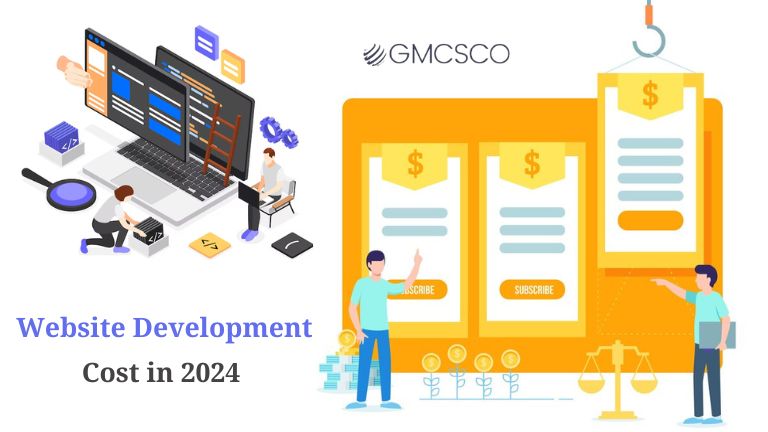
A website is the cornerstone of any successful business or personal brand. Whether you’re a startup looking to establish your online presence or a seasoned entrepreneur aiming to revamp your existing site, one burning question remains: how much does website development cost in 2024?
In this dynamic landscape where technology evolves rapidly, understanding the factors that influence website development costs is crucial. Let’s delve into the intricacies of pricing to navigate this terrain more effectively.
Also Read About Why use PHP for website development
The Foundation: What Determines Website Development Costs?
- Type of Website: The complexity and functionality of your website play a significant role in determining the cost. A simple brochure site will be less expensive than an e-commerce platform or a custom web application.
- Design Requirements: The design aesthetic you envision for your website affects the cost. Basic templates might be more affordable, while custom designs tailored to your brand can incur higher expenses.
- Features and Functionality: Integrating specific features like e-commerce capabilities, user authentication systems, or content management systems (CMS) impacts the overall cost. Each additional feature adds complexity to the development process.
- Content Creation and Copywriting: Creating high-quality content, including text, images, and multimedia elements, adds to the cost. Professional copywriting and graphic design services contribute to a polished final product.
- Mobile Responsiveness and Optimization: With mobile devices dominating internet usage, ensuring your website is responsive and optimized for various screen sizes is essential. This optimization may require additional development work, influencing the total cost.
- SEO and Digital Marketing Integration: Building a website that’s optimized for search engines and seamlessly integrates with digital marketing strategies involves additional investment. SEO-friendly coding, keyword research, and metadata optimization contribute to higher costs.
- Maintenance and Support: Factor in ongoing maintenance and support costs, including updates, security patches, and technical assistance. Investing in a maintenance plan ensures your website remains functional and secure in the long run.
Also Read About How to migrate website without loss traffic
Cost Breakdown: What to Expect in 2024
- Basic Websites: Simple brochure websites with minimal functionality typically range from $1,000 to $5,000. These sites serve as digital business cards, providing essential information about your company or brand.
- E-Commerce Websites: Building an e-commerce platform with features like product listings, shopping carts, and payment gateways requires a more substantial investment. Prices for e-commerce sites start around $5,000 and can exceed $50,000 for complex projects.
- Custom Web Applications: Projects involving custom web applications or software solutions vary widely in cost, often starting at $10,000 and scaling up based on complexity and functionality requirements.
- Content Management Systems (CMS): Integrating a CMS like WordPress or Drupal into your website adds flexibility for content updates and management. Prices for CMS-based sites typically range from $3,000 to $15,000, depending on customization needs.
- Additional Services: Incorporating services like SEO, digital marketing, content creation, and ongoing maintenance will incur additional costs. Budgeting for these services ensures a comprehensive approach to your website’s success.
As we navigate the realm of website development in 2024, it’s essential to recognize that cost is just one aspect of the equation. While budget constraints are significant, prioritizing quality, functionality, and user experience is equally crucial.
By understanding the factors that influence website development costs and working closely with experienced professionals, you can make informed decisions that align with your goals and budgetary considerations. Remember, your website is more than just an online presence—it’s a powerful tool for driving growth, engaging customers, and achieving your business objectives.
Also Read About:
